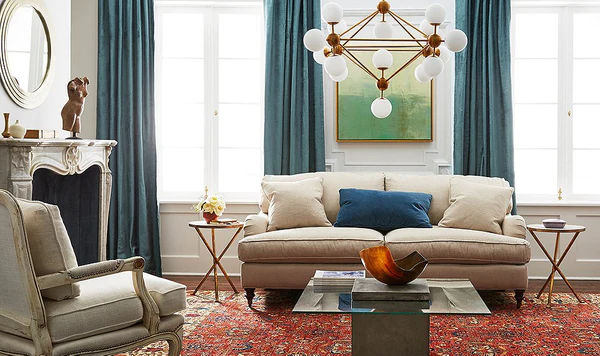
In the realm of interior design, the harmonious blending of artworks and furniture is an art form in itself. When done right, this skilful integration can elevate the aesthetic appeal of a space and create a balanced and visually captivating decor. From contemporary pieces to aboriginal art, mixing allows for expressing personal style and the infusion of diverse cultural influences. This article will delve into the art of combining artworks and furniture, exploring the principles of balance, contrast, and cohesion.
I. Achieving Balance: Creating Visual Harmony
Achieving balance is crucial when combining artwork and furniture. It is important to consider both elements’ size, scale, and placement within the space. For instance, a large-scale painting can be balanced with a substantial furniture piece or complemented by a cluster of smaller art pieces. Distributing visual weight evenly throughout the room creates a sense of equilibrium, creating a harmonious decor.
II. Embracing Contrast: Enhancing Visual Interest
Contrast plays a key role in creating a captivating interior. The juxtaposition of different styles, eras, and textures can add depth and intrigue to a space. Mixing contemporary furniture with traditional artwork can create a striking contrast that adds visual interest. For example, pairing a sleek modern sofa with a vibrant art piece can create a dynamic dialogue between the traditional and the contemporary, infusing the space with a sense of cultural significance and artistic diversity.
III. Cohesion through Colour: Connecting Art and Furniture
Colour is a powerful tool for establishing cohesive decor. When combining artwork and furniture, selecting a common colour palette or complementary hues can create a visual thread that ties the elements together. Traditional art, with its rich and vibrant colour schemes inspired by natural landscapes and cultural symbolism, can be a focal point for colour inspiration. By incorporating furniture pieces that echo or complement the colours found in the art, a sense of unity and harmony is achieved, enhancing the overall aesthetic appeal of the space.
IV. Adding Depth: Showcasing Cultural Heritage
The inclusion of Aboriginal art in interior design can add aesthetic value and celebrate the cultural heritage and artistic traditions of Australia’s First Nations people. Wood, rattan, bamboo, and leather are excellent options that align with the earthy and organic elements often found in Indigenous artworks. These materials not only bring a sense of warmth and authenticity to the space but also establish a connection to the natural world, which is deeply rooted in Aboriginal culture.
V. Personal Expression: Reflecting Individual Style
The art of mixing artwork and furniture allows for personal expression and the reflection of individual style within the home. Whether one prefers a minimalist approach with bold focal artwork or an eclectic mix of furniture and diverse art pieces, the possibilities are endless. Integrating Native cultural art into one’s personal decor not only adds cultural depth but also allows for a unique and meaningful statement. From traditional dot paintings to contemporary interpretations, Native Australian art offers a wide range of styles and themes that can be tailored to suit various design aesthetics.
In conclusion, the art of mixing artworks and furniture is a creative endeavour that allows individuals to express their personal style and create visually captivating spaces. Whether through bold focal points or carefully curated vignettes, the combination of art and furniture creates a balanced decor that fosters an appreciation for diverse artistic expressions and transforms living spaces into vibrant and meaningful environments.





